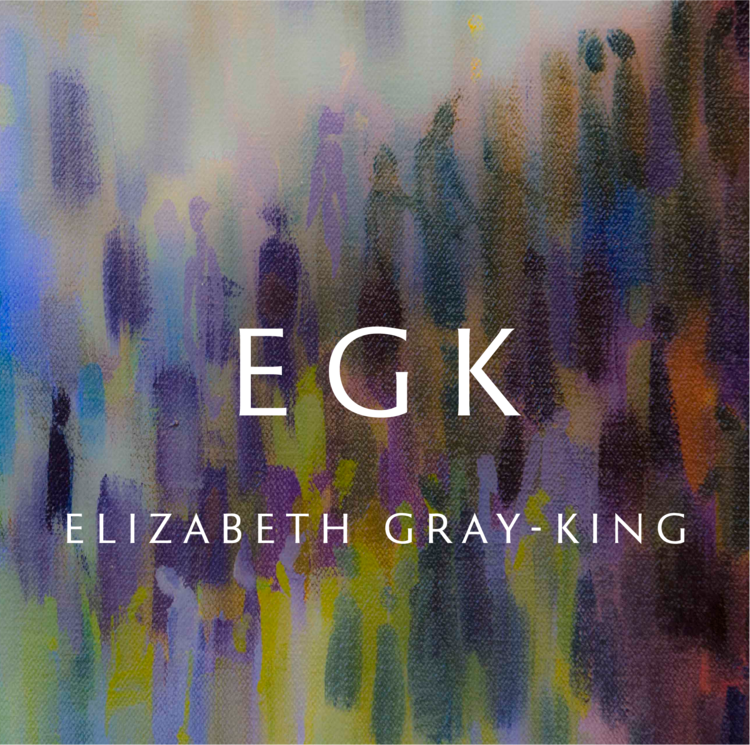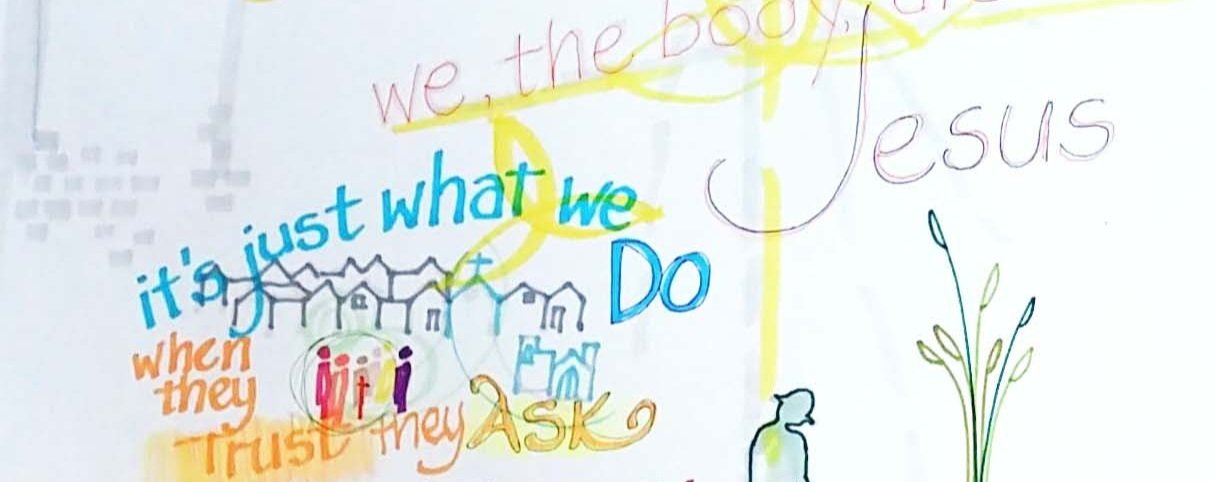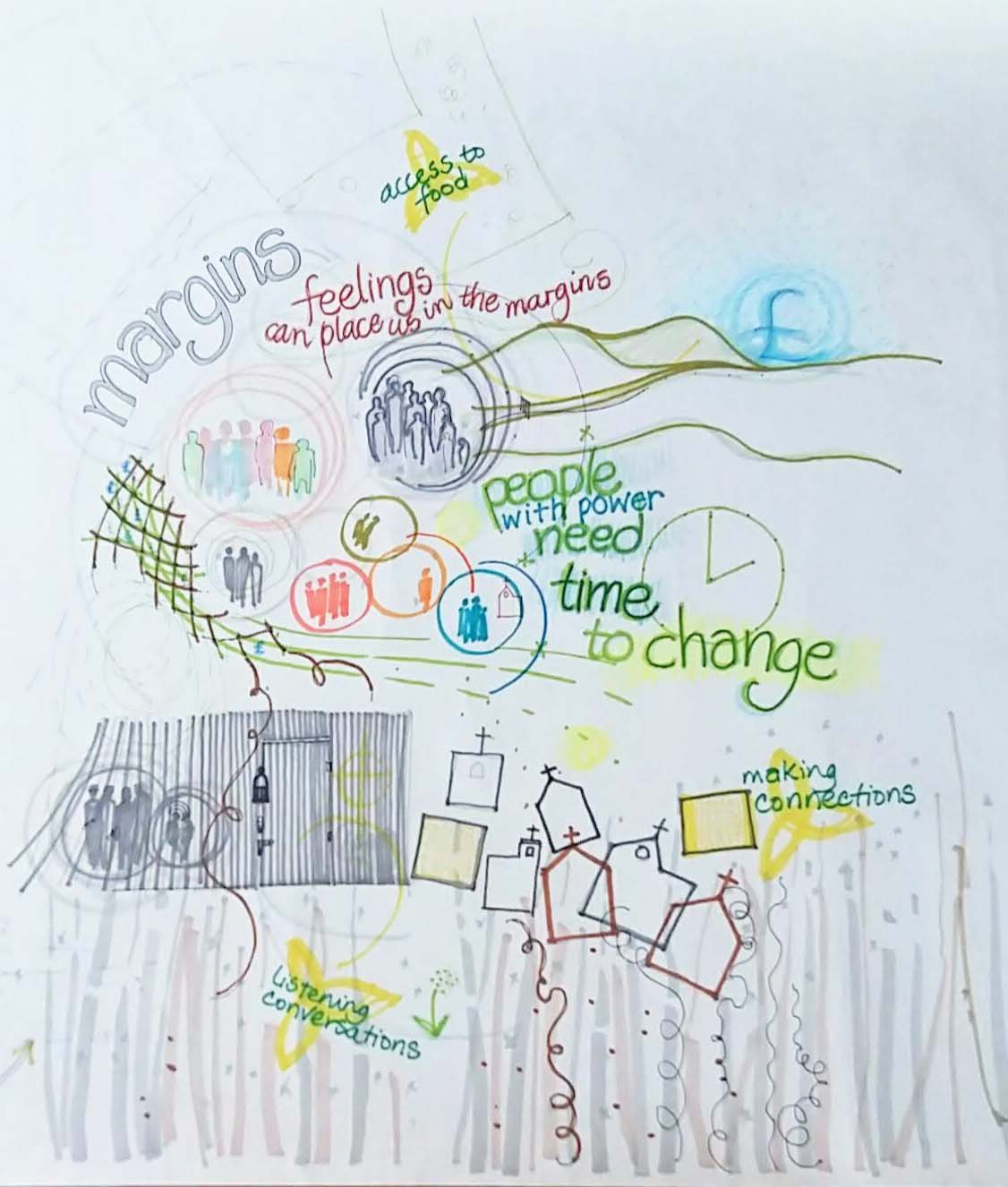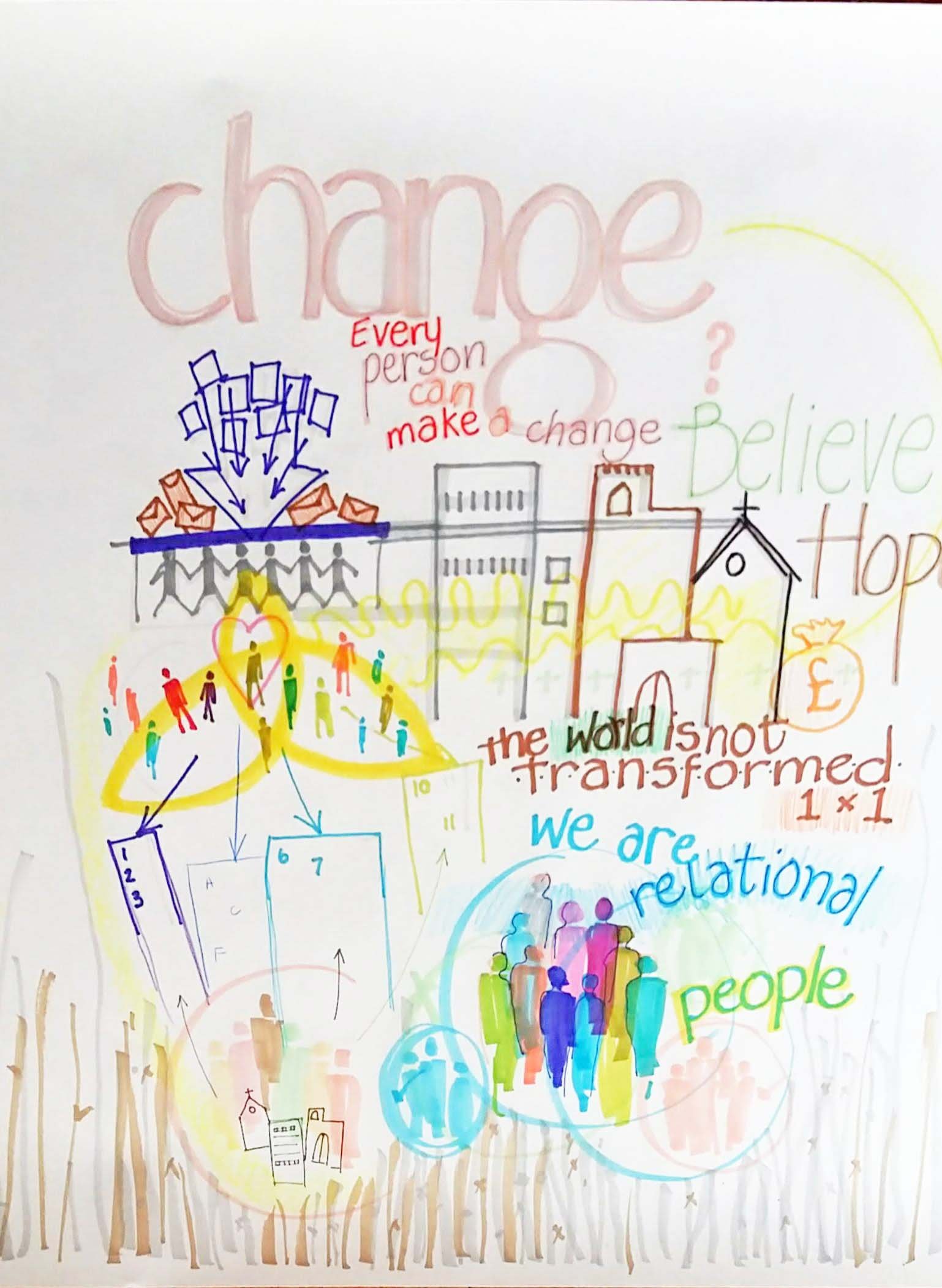In the Thick of It
Scargill House, Yorkshire, 22-23 May 2019
In the Thick of It gathered together over 50 participants from church related work in the thick of life considered to be on the margins of the structures of society in the UK. Sponsored by the Council for World Mission and hosted by the United Reformed Church, there was rich dialogue between people working in advocacy, mission, support, chaplaincy, campaigns, and training. This is my narrative of my visual response to what I heard. The strong yellow throughout is God’s presence and the yellow Celtic trinity forms are specific work showing what is making a positive difference. The column headings are the event’s session titles.
Minutes set up
I arrived with my own sense of the margins, as I have often described my relationship to the institutional worshipping church as 'on the fringes of the prayer shawl.' I don't easily fit and find myself an out-lyer of sorts. So the image began with a woven prayer shawl, but a different pattern than the Orthodox Jewish version. The fringes moved into weeds and thorns at the bottom of the whole scroll, the thicket of life for so many in margins.
The strong yellow colour is my code for the presence of God. This goes throughout the scroll.
Flourishing & Ambiguity
As Anna gently unfolded her research about marginality, we heard that work in the margins shows both flourishing and ambiguity. In the thicket, people of many colours and sizes mix, with the yellow people being those from churches. There are messy edges and sparks of inspiration. It is complex and yet good. There may be loss with both a sense and the reality of distance from the institutions and places of power, stretched out at the top of this section. The yellow institution suggests that God is not absent from anywhere. The scribbles through it all are akin to midrash, the rabbinic notes alongside Hebrew texts. The Celtic trinity symbols are the presence of God everywhere.
What do we mean by the Margins?
We heard of margins from a prison chaplain, a Church related community worker, and from a community worker. They told of being marginalised in a place of marginality itself, with the chaplain marginanlised by those in the prison which itself locked its inhabitants in a marginal place. We heard of distance from food and deep poverty, with circles of people identifying in their same anquish, the public safety net fraying. The church itself can be on the margin, losing significance in society. Modern church buildings can be marginalised by their lack of symbolic structure. Yet God is seen as connection are made, food is shared, and conversations are characterised by quality listening.
Listening to the margins
We listened to work with people on the margins in a shelter for abused women, in a halfway house for released prisoners, and in a safe house for people working out of substance use. We heard about poverty truth and reconciliation and about growing confidence through gardening. And we heard a harrowing testimony of living in the complex deprivation from universal credit.
Digging deeper world café
Feedback from World Café open table discussion told of anguish experienced from institutional church. We heard that to bring Christ to people in the margins, needs must be met first, that truth needs to be told and the lies about those in the margins needs to be challenged. To challenge, we need to understand where the power operates. We heard about strength in small churches and groups, challenging the notion of size as indicator of success.
Mission in the margins
How is the church built in the margins? People do what they do - hospitality, conversation, companionship, partner working, eating together anywhere and at any time. They engender trust and hold space no matter how long or how difficult it is. They know it's hard work, akin to sowing seed in concrete. In the margins, the people of Jesus know that because they are gathered, Jesus is there; that it is God's work not theirs.
Change from the margins
Finally, how can change happen from the margins? The answer was beautifully simple - invite those who can change structures into the circles of those who are on the edge. Let there be space and time for the structure representatives to listen well without undue confrontation. It is deeply human nature to be relational, and change will occur when those relationships become collective voices. One person in the margins may make little impact; many persons, welcoming a structure agent to listen, can make an enormous impact. People on the margins can grow to believe that collectively, they can grow hope and that change will be real.
IN THE THICK OF IT
Elizabeth Gray-King 2019














